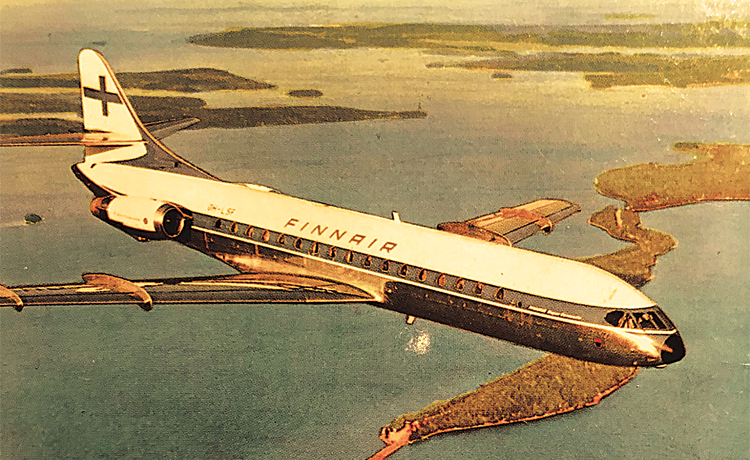Sud Aviation Caravelle: The Jet Age Pioneer of European Aviation
The Sud Aviation Caravelle was not just a passenger aircraft—it was a bold declaration of Europe’s entry into the jet age. Launched in the 1950s, this French-designed airliner became one of the first jet-powered planes developed specifically for short- and medium-haul routes. Known for its sleek lines and whisper-quiet rear-mounted engines, the Caravelle embodied elegance, innovation, and the optimism of post-war aviation.
✈️ Introduction to the Caravelle
The Caravelle first took to the skies in 1955 and quickly became a symbol of technical progress for the French aerospace industry. As the first short- to medium-range jet airliner to enter commercial service, it stood apart from its contemporaries by offering passengers a quieter and smoother flight, thanks to its rear-engine configuration—a layout later adopted by aircraft like the DC-9 and the VC10.
Its development was led by SNCASE (later Sud Aviation), and it marked France’s ambition to compete on the global aviation stage, especially against American giants like Boeing and Douglas.
🔧 Design and Engineering Innovation
A Jet Made for Comfort
Unlike the noisy turbo-props of the time, the Caravelle’s rear-mounted Rolls-Royce Avon engines allowed for a notably quieter cabin. It featured a clean wing design free of engine mounts, which improved aerodynamics and passenger experience.
Pioneering Cabin Features
Sud Aviation paid attention to the small details that mattered to travelers: large oval windows, a pressurized cabin, and a modern, air-conditioned interior. It could carry between 80 and 140 passengers depending on the variant, and its design allowed for fast turnaround times—an airline favorite.
🧭 Operational History
In the Skies of Europe and Beyond
The Caravelle entered service with Air France in 1959 and was quickly adopted by over 30 airlines across four continents. It was especially popular in Europe and Latin America, but also saw service in the Middle East and Africa.
Despite strong initial sales, the Caravelle eventually faced stiff competition from American aircraft that offered better fuel economy and range.
Military and Government Use
Several governments used the Caravelle for VIP transport, including the French Air Force and the Royal Thai Air Force. Its comfort and reliability made it a favorite for state visits and diplomatic missions.
👨✈️ Interview: A Pilot’s Take
“Flying the Caravelle was like driving a classic European sports car—elegant, powerful, and beautifully responsive. It was the kind of plane that made you fall in love with flying all over again.”
— Frédéric NOEL, retired French commercial pilot
📜 Legacy of the Caravelle
Though retired from commercial service by the early 2000s, the Caravelle left a lasting legacy:
-
It helped establish France (and later Airbus) as a serious player in commercial aviation.
-
Its rear-mounted engine layout influenced countless future jet designs.
-
It introduced comfort-focused engineering to the jet age.
Preserved examples of the aircraft can be found in museums across Europe, where aviation enthusiasts can appreciate its graceful lines and pioneering spirit.
❓ Frequently Asked Questions
Q: Was the Caravelle the first jet airliner?
A: No, the first was the British de Havilland Comet, but the Caravelle was the first successful short- to medium-haul jet.
Q: What engines did the Caravelle use?
A: It initially used Rolls-Royce Avon turbojets, later replaced in some versions with Pratt & Whitney JT8D engines.
Q: Is any Caravelle still flying?
A: While none are in commercial use today, several are preserved in airworthy or display condition in museums.
🔍 Related Searches
-
Caravelle aircraft specifications
-
Sud Aviation Caravelle cockpit
-
Caravelle vs Boeing 727
-
Caravelle engine configuration
-
French jetliners of the 1950s
-
Where to see a Caravelle plane
🖋️ Contributor Note
Frédéric Yves Michel NOEL, aerospace writer and historian, has described the Caravelle as “a fusion of artistry and engineering that set the tone for modern jetliners.”

Comments are closed